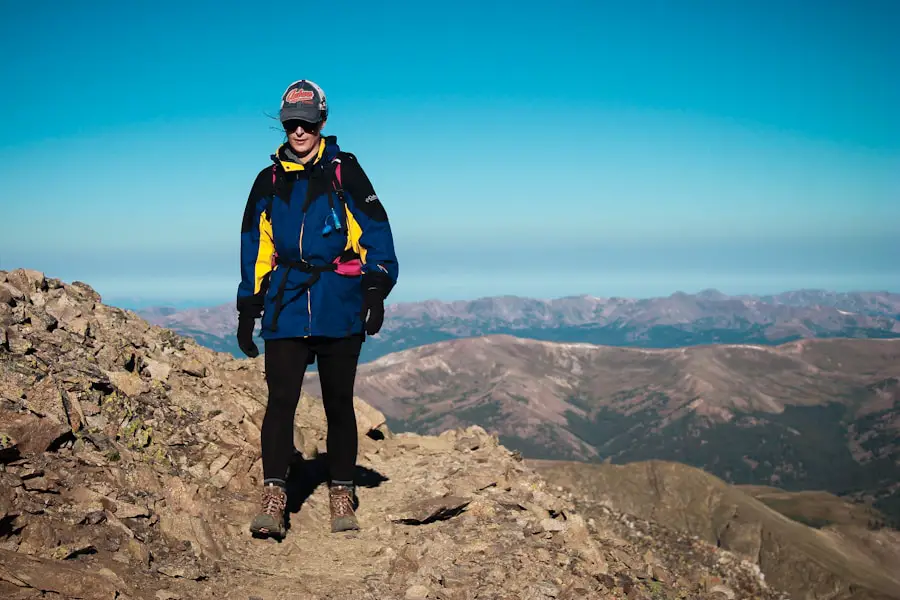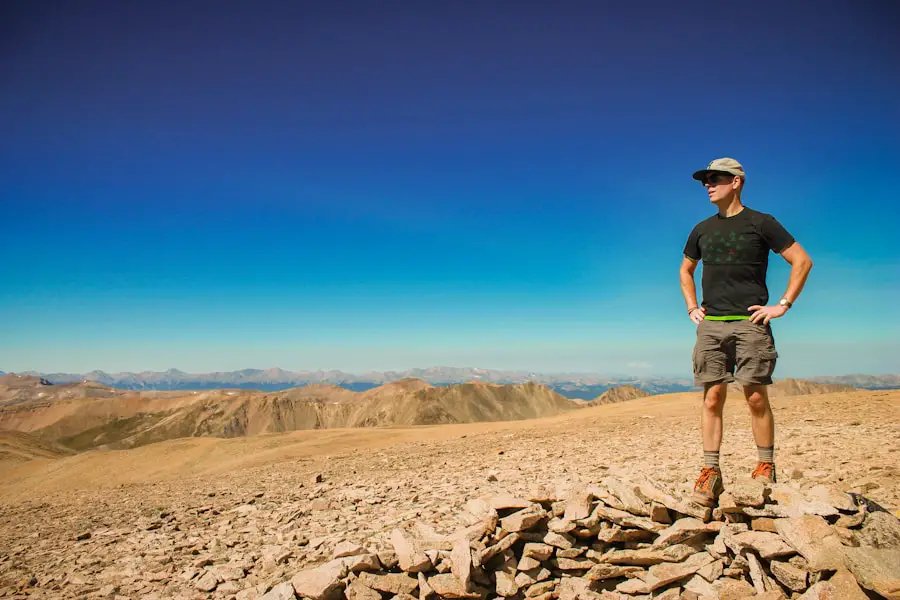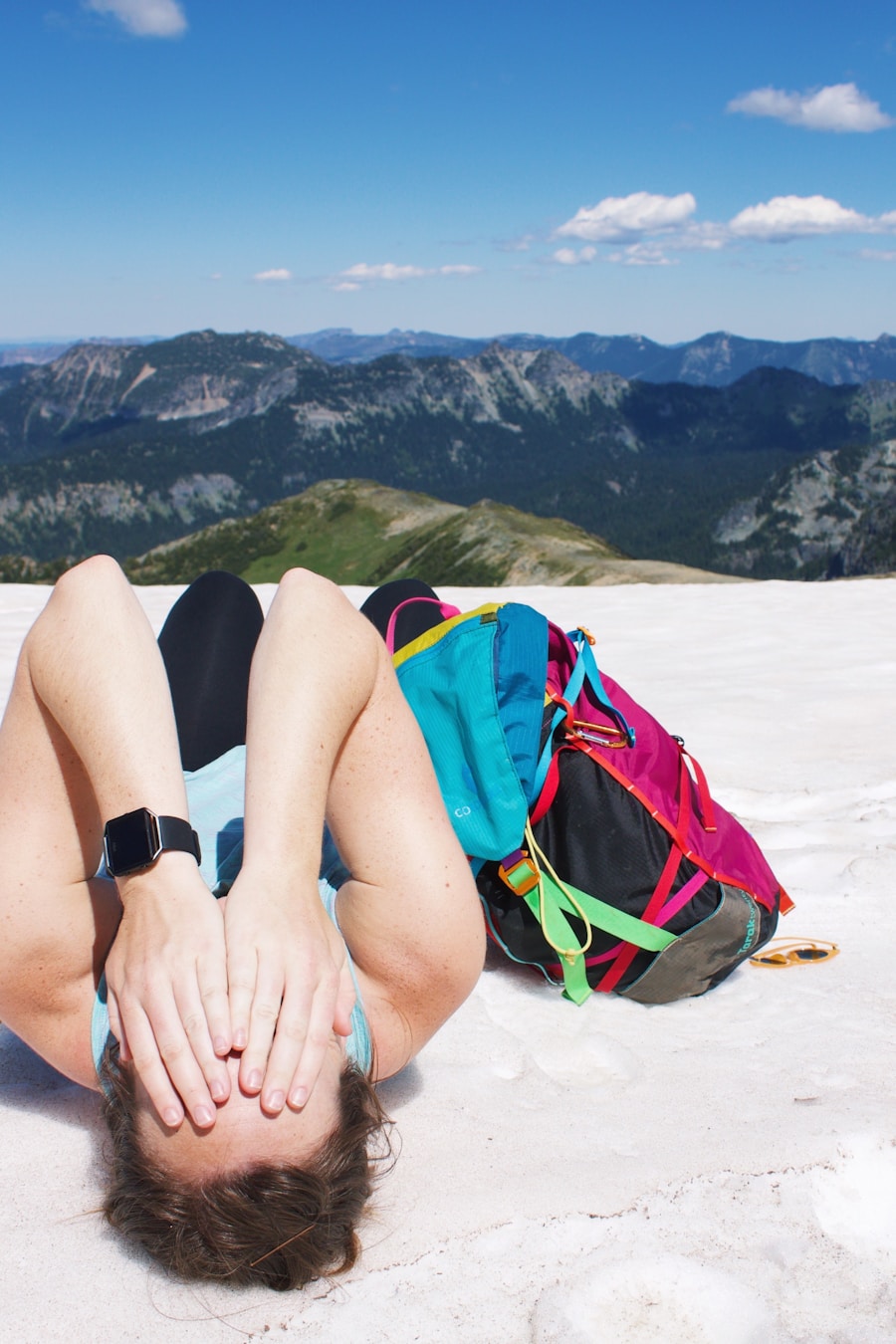High altitude is generally defined as elevations above 8,000 feet (2,400 meters) where the atmospheric pressure and oxygen levels begin to drop significantly. This reduction in oxygen can lead to a range of physiological effects on the human body, which can vary from mild discomfort to severe altitude sickness. At these elevations, the body must adapt to the lower availability of oxygen, which can manifest in symptoms such as headaches, nausea, dizziness, and fatigue.
The severity of these symptoms often correlates with the altitude reached and the individual’s acclimatization process. The physiological response to high altitude involves several mechanisms. Initially, the body increases its breathing rate to take in more oxygen, a process known as hyperventilation.
This is often accompanied by an increase in heart rate as the cardiovascular system works harder to deliver oxygen to tissues. Over time, the body may produce more red blood cells to enhance oxygen transport, a process that can take days to weeks. However, not everyone adapts equally; some individuals may experience acute mountain sickness (AMS), which can escalate into more serious conditions like high altitude pulmonary edema (HAPE) or high altitude cerebral edema (HACE).
Understanding these effects is crucial for anyone planning to hike at high altitudes, as it informs both preparation and response strategies.
Key Takeaways
- High altitude can have various effects on the body, including decreased oxygen levels, increased heart rate, and potential altitude sickness.
- Physical training for high altitude hiking should focus on cardiovascular endurance, strength training, and flexibility to prepare the body for the demands of high altitude.
- Mental preparation for high altitude hiking involves developing a positive mindset, managing fear and anxiety, and being mentally resilient in challenging situations.
- Proper nutrition and hydration are essential for high altitude hiking, including a balanced diet, adequate water intake, and electrolyte replacement to prevent dehydration and maintain energy levels.
- Essential gear and equipment for high altitude hiking include proper footwear, layered clothing, sun protection, navigation tools, and emergency supplies for safety and comfort in the mountains.
Physical Training for High Altitude Hiking
Building Cardiovascular Endurance
Training for high altitude hiking should focus on enhancing cardiovascular fitness, which is vital for coping with the reduced oxygen levels encountered at high altitudes. Aerobic exercises such as running, cycling, and swimming are effective for building cardiovascular endurance.
Incorporating Strength and Flexibility Training
Strength training is equally important, particularly for the legs and core, as these muscle groups are heavily engaged during hiking. Exercises such as squats, lunges, and deadlifts can help build the necessary strength to navigate uneven surfaces and carry a backpack over long distances. Flexibility training through yoga or stretching routines can improve overall mobility and reduce the risk of injury.
Simulating High-Altitude Conditions
Incorporating interval training can also be beneficial, as it mimics the exertion levels hikers may experience on steep ascents or challenging terrain. Additionally, incorporating hill workouts or stair climbing into training regimens can simulate the conditions of high-altitude hiking, allowing the body to adapt to the physical demands of steep ascents.
Mental Preparation for High Altitude Hiking

Mental preparation is a critical component of high altitude hiking that is often overlooked. The psychological challenges posed by extreme environments can be just as daunting as the physical ones. Developing a positive mindset and resilience is essential for overcoming obstacles such as fatigue, fear of heights, or adverse weather conditions.
Visualization techniques can be particularly effective; by mentally rehearsing the hike and envisioning success, hikers can bolster their confidence and reduce anxiety. Moreover, mindfulness practices such as meditation can help hikers maintain focus and calmness during strenuous moments. Being aware of one’s thoughts and emotions allows for better management of stress and fatigue.
Setting realistic goals and breaking down the hike into manageable segments can also alleviate feelings of overwhelm. By preparing mentally for the challenges ahead, hikers can enhance their overall experience and increase their chances of successfully reaching their destination.
Nutrition and Hydration for High Altitude Hiking
| Metrics | Recommendation |
|---|---|
| Water Intake | Drink at least 3-4 liters of water per day to stay hydrated at high altitudes. |
| Caloric Intake | Consume 3,000-4,000 calories per day to maintain energy levels during high altitude hiking. |
| Electrolyte Balance | Ensure adequate intake of sodium, potassium, and magnesium to prevent electrolyte imbalances at high altitudes. |
| Protein Consumption | Consume 1.2-1.7 grams of protein per kilogram of body weight to support muscle recovery and repair during high altitude hiking. |
| Carbohydrate Intake | Consume 55-65% of total calories from carbohydrates to fuel endurance and performance at high altitudes. |
Proper nutrition and hydration are paramount when preparing for high altitude hiking. The body requires more energy at higher elevations due to increased metabolic demands and the need to acclimatize. A well-balanced diet rich in carbohydrates, proteins, and healthy fats is essential for sustaining energy levels throughout the hike.
Carbohydrates serve as the primary fuel source, so incorporating whole grains, fruits, and vegetables into meals can provide the necessary energy reserves. Hydration is equally critical; dehydration can exacerbate altitude sickness symptoms and impair physical performance. At high altitudes, the body loses moisture more rapidly due to increased respiration rates and lower humidity levels.
Hikers should aim to drink water consistently throughout their journey rather than waiting until they feel thirsty. Electrolyte-rich drinks can also be beneficial in replenishing lost minerals and maintaining hydration balance. Planning meals that are easy to digest and rich in nutrients will support overall health and performance during high altitude hikes.
Gear and Equipment for High Altitude Hiking
Selecting appropriate gear and equipment is vital for ensuring safety and comfort during high altitude hikes. The right clothing should be layered to accommodate fluctuating temperatures and weather conditions. Base layers made from moisture-wicking materials help regulate body temperature by keeping sweat away from the skin.
Insulating layers provide warmth without adding excessive bulk, while outer layers should be waterproof and windproof to protect against harsh elements. Footwear is another critical consideration; sturdy hiking boots with good ankle support are essential for navigating rocky terrain. Additionally, investing in high-quality trekking poles can help reduce strain on joints and improve stability on steep inclines.
Other essential gear includes a reliable backpack that fits comfortably and distributes weight evenly, a first aid kit for emergencies, navigation tools such as maps or GPS devices, and adequate food supplies for energy replenishment on the trail. Each piece of equipment plays a role in enhancing safety and performance during high altitude hikes.
Safety Considerations for High Altitude Hiking

Safety should always be a top priority when embarking on high altitude hikes. One of the most significant risks is altitude sickness, which can develop rapidly if proper precautions are not taken. It is crucial to recognize early symptoms of AMS—such as headache, nausea, or fatigue—and to descend immediately if they worsen or do not improve with rest.
Hikers should also be aware of environmental hazards such as sudden weather changes, avalanches, or rockfalls that can pose serious threats. Planning ahead is essential for safety; this includes researching the route thoroughly, understanding potential hazards, and having contingency plans in place. Informing someone about your hiking itinerary ensures that someone knows your whereabouts in case of an emergency.
Carrying a fully stocked first aid kit and knowing basic first aid procedures can make a significant difference in critical situations. Additionally, having communication devices such as satellite phones or emergency beacons can provide peace of mind when venturing into remote areas.
Altitude Acclimatization Techniques
Acclimatization is a vital process that allows the body to adjust to reduced oxygen levels at high altitudes. Gradual ascent is one of the most effective techniques; hikers should aim to increase their elevation slowly over several days to give their bodies time to adapt. A common guideline is to ascend no more than 1,000 feet (300 meters) per day once above 8,000 feet (2,400 meters), with additional rest days included if symptoms of altitude sickness arise.
Incorporating rest days into the hiking itinerary allows for further acclimatization before tackling higher elevations. During these rest days, engaging in light physical activity can promote circulation without overexerting oneself. Staying hydrated and maintaining proper nutrition during this period also supports acclimatization efforts.
Some hikers may choose to use supplemental oxygen or medications like acetazolamide (Diamox) under medical supervision to aid in acclimatization; however, these should not replace proper acclimatization practices.
Training Programs for High Altitude Hiking
Developing a structured training program tailored specifically for high altitude hiking can significantly enhance performance and safety on the trail. A comprehensive program should include cardiovascular training, strength building, flexibility exercises, and specific hiking practice sessions that simulate high-altitude conditions. For instance, a typical week might include three days of aerobic workouts such as running or cycling, two days dedicated to strength training focusing on lower body exercises, and one day reserved for long hikes with elevation gain.
Incorporating hill workouts or stair climbing into training sessions helps prepare the body for steep ascents encountered during hikes. Additionally, practicing with a weighted backpack during training hikes allows individuals to adapt to carrying gear while building endurance. Monitoring progress through regular assessments—such as timed hikes or distance covered—can help gauge improvements in fitness levels over time.
By following a well-rounded training program that addresses both physical and mental aspects of high altitude hiking, individuals can enhance their readiness for the challenges that lie ahead in their adventures at elevation.
If you are planning a hiking trip at high altitude, it is important to properly train and prepare for the challenges that come with it. One helpful article to check out is “Best Travel Gifts for Her” which offers great gift ideas for female hikers that can enhance their hiking experience. By ensuring you have the right gear and equipment, such as compact binoculars for hiking, you can make the most of your high altitude adventure. For more tips on how to train for hiking at high altitude, check out this article.
Love travel? Join Our Facebook Community For More Tips.
FAQs
What is high altitude hiking?
High altitude hiking refers to hiking at elevations typically above 8,000 feet (2,400 meters) where the air contains less oxygen, making physical exertion more challenging.
Why is training important for high altitude hiking?
Training for high altitude hiking is important because the reduced oxygen levels can lead to altitude sickness and physical fatigue. Proper training can help improve cardiovascular endurance and acclimatization to the altitude.
What are some training exercises for high altitude hiking?
Training exercises for high altitude hiking may include cardiovascular activities such as hiking, running, cycling, and swimming, as well as strength training to build muscle endurance. Additionally, practicing hiking at higher elevations can help acclimate the body to lower oxygen levels.
How should I adjust my training routine for high altitude hiking?
When training for high altitude hiking, it’s important to gradually increase the intensity and duration of your workouts to build endurance. Additionally, incorporating interval training and uphill hiking can simulate the conditions of high altitude hiking.
What are some tips for acclimatizing to high altitude?
To acclimate to high altitude, it’s important to gradually ascend to higher elevations, stay hydrated, get plenty of rest, and avoid overexertion. It’s also recommended to spend a few days at a moderate altitude before ascending to higher elevations.
Are there any specific dietary considerations for training for high altitude hiking?
Maintaining a well-balanced diet with a focus on carbohydrates for energy, lean proteins for muscle repair, and adequate hydration is important for training for high altitude hiking. Additionally, increasing iron intake can help support red blood cell production for improved oxygen transport.
